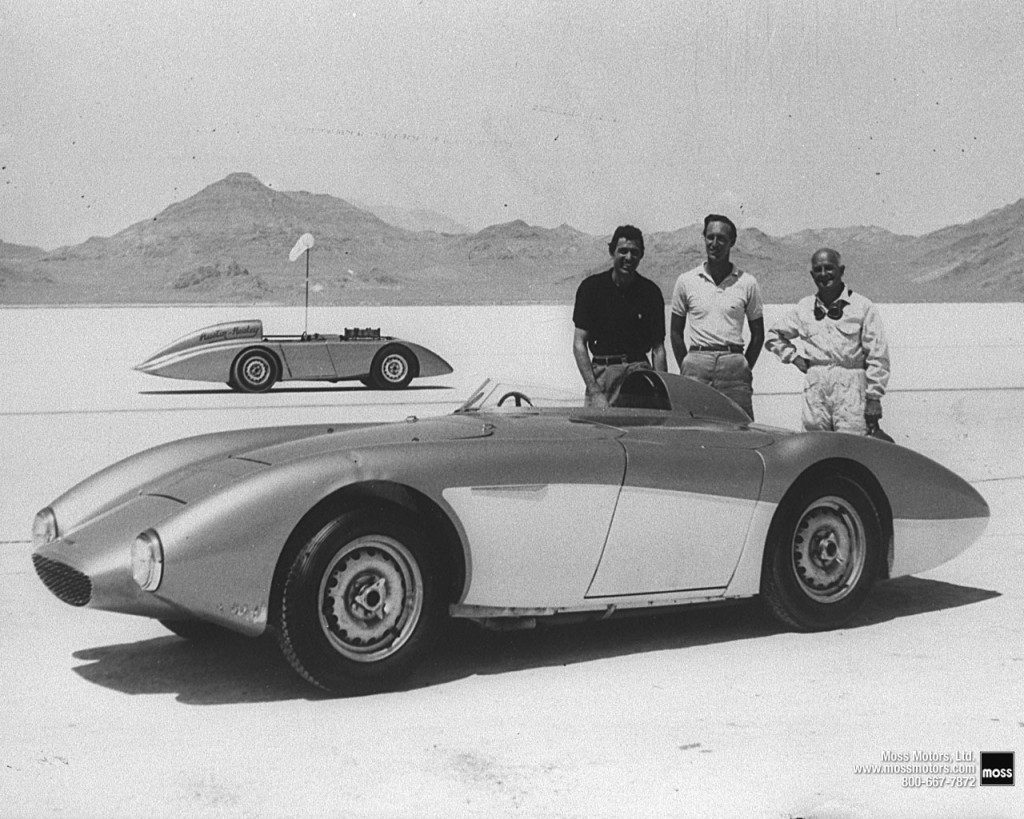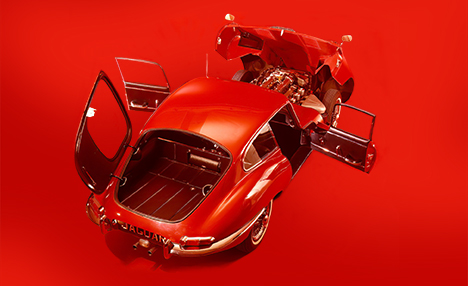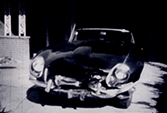Nine short years is what Carroll Shelby spent as a race car driver. During his abbreviated driving career, one cut short by a heart condition that would partially confine his career, but never define him, Carroll Shelby raced heads up against some of the most prominent and preeminent drivers of the 1950s. Sterling Moss, Juan Fangio, Jack Brabham, Phil Hill, Von Trips and Bruce McLaren where his contemporaries and his competition.
Before Carroll Shelby became an icon as an automobile builder, he was a crucial player in establishing Austin-Healey in the American marketplace. This is often overshadowed by the Cobra, the GT350 and his work with Chrysler. All of these Carroll Shelby stories, based around the cars he built, his racing feud with Enzo Ferrari, his friendship with Lee Iacocca, are chronicled so well that if you are unaware of Shelby or the cars he had a hand in creating, then it’s likely you were raised on an asteroid—or maybe in North Korea.
What is often overlooked, or at best, briefly touched upon, is that Carroll Shelby currently shares 8 FIA certified land endurance racing records. These records are better than 56 years old, and they are all in Austin-Healeys. I say “shared” because these records are endurance records, 24 hours of mind blowing, wide-open throttle testing, done an a 10-mile circle marked out on the Bonneville Salt Flats. These records were established ten years before the first Mustang saw a showroom floor.
Don Healey’s quest on the salt flats wasn’t the traditional British record attempts sought by gentlemen racers with sporting blood. Instead, Donald Healey would use MG’s promotional model of setting records, and then splashing them everywhere he could to promote the new AH100.
During the 1930’s, MG started using their record setting feats as fodder for advertising their products, and to great success. As early as 1931, records set at Montlhery and Pendine Sands were proudly proclaimed in the British press, and the idea of an “everyman’s car” being able to set records had a strong appeal. MG ran ads in every conceivable publication trumpeting their achievements, and it clearly worked to push thousands of M-Types, P-Types and T-Types out the garage doors of Abington.
The AH100 hit the streets in 1953, sporting slim, muscular and elegant bodylines, a stout, good handling chassis with the underpinnings of the Austin A90, and the huge 2.6 liter inline Austin 4. The deal brokered by Healey with BMC was his opportunity to mass produce the kind of specialty car that his small company had struggled to produce since 1946.
This alliance worked well for BMC. For the cost of a short assembly line and a shared parts bin, BMC retained distribution rights and could expand their market share into the bourgeoning United States sports car market. But Don Healey knew that if he was to make this sweetheart deal successful, he would have to promote the car in the U.S. market. To do so, the car needed to make some news, and to do it in America’s back yard certainly wouldn’t hurt.
***
Carroll Shelby’s first win in a sports car race came in a 1949 MG-TC. He later campaigned a Cadillac powered Allard J2 in a handful of SCCA event wins. Imagine that – a British sports car with American power.
Just two short years into his racing career, Donald Healey asked this brash, self-promoting young WWII pilot trainer to help establish Austin-Healey’s dominance in the world of land speed racing and record establishment at Bonneville. At the time, Carroll Shelby had just raced for Aston Martin at Sebring, and was clearly a rising star.
To launch the AH100, a special endurance model was built by Healey. Among those Americans who were keen to sports cars at the time, one could scarcely turn a page in an automotive publication without seeing Shelby’s name in the race results. Bringing Carroll Shelby to the party brought American street cred to a challenge that would otherwise have looked like the same old British gentlemen racers that made Bonneville famous in the 1930s. And the high profile of international record setting on the salt had to have had a huge appeal to Shelby, who was never ashamed to state his name in public.
***
The team that drove the modified Healey 100 was an all-star cast of notables, all former military pilots, and probably the most talented group of five drivers ever to have raced the same car in a single event. The drivers included Donald Healey himself, who took the first shift of a 24-hour endurance drive that would establish 83 international and American records for his company, his car, and the men driving it. Sharing driving duties were George Eyston, witness to, chronicler of, and participant in the events that saw the first 300-mph-plus car create the legend of Sir Malcolm Campbell and Bluebird. Captain Eyston had more experience driving on the salt than any other man on earth at the time. Driver Mort Morris-Goodall, the father of anthropologist Jane Goodall, also raced Aston Martins and had driven a Healey Saloon at Le Mans in 1950. Roy Jackson-Moore, a very talented British expatriate racer who had moved to San Francisco as a rep for Austin, was a savvy marketer and sales support wonk. His contribution as a driver was augmented by his position as a field service executive. Beyond pulling a shift behind the wheel, his personal participation in this event was greasing the rails for what was soon to become a torrent of two-seat British built sports cars invading American soil.
And then there was Carroll Shelby, the failed chicken farmer from Texas who had climbed behind the wheel of his first race car only two years earlier, and was now the amazing American in international racing. An American, driving on American salt—the only team member playing on his home turf.
There was and remains no better place to push the edge of automotive technology than the Bonneville Salt Flats. Here was a dead flat surface on which a circle 10 miles in diameter could easily and cheaply be staked out. By the 1950’s, the Lincoln Highway provided easy access to Bonneville from Salt Lake City or San Francisco. It is remote, but not inaccessible; famous, but not over-run; legendary, but unpretentious.
Including pit stops and driver changes, the car and team averaged 132.29 mph, running 24 consecutive hours between August 23 and August 24, 1954.
Think about that for a minute. In a modified AH100, they AVERAGED 132.29 mph. Over 24 hours.
***
This had been a great, high profile opportunity for Carroll Shelby to further establish his racing career. But not only was he racing at a world class level with world class racers, he was also filling his rolodex with the world class names and world class phone numbers of well placed auto and racing personnel—a rolodex that would prove most useful a few years down the road.
***
After Shelby retired from racing, he knew he needed to come up with a new way to make a living.
Carroll Shelby called on Donald Healey in 1961, and proposed working together to install an American V8 into a Healey designed sports car. Don was still committed to BMC, and quite frankly, he was selling all the 3000s and Sprites he could screw together. At the time, MG was in pre-production with the MGB, and the Sprite was about to be face lifted and “badge engineered” as the new MG Midget. Jaguar had just unleashed the XKE to take on the 3000, and Triumph was about to release the Spitfire, a direct competitor to the Sprite. With the limited sales success of the Nash-Healey still fresh in his mind, Donald saw this idea of a limited production super-sports car as a distraction he was unwilling to involve himself with. He’d been there, and he’d done that. So Don passed on the Cobra idea.
But one of the other names in Shelby’s rolodex was Charles Hurlock, who owned A.C. cars. They had recently lost an engine supplier.
Imagine that – a British sports car with American power.
By Chris Conrad









'August 23 and 24, 1954' have 4 comments
May 25, 2012 @ 2:35 pm John Lore
Great story, really enjoyed reading about Mr. Shelby.
I had never heard that Shelby had contacted Donald Healey about installing a V8 in a “Healey”. Wouldn’t that of been a record breaker!
November 19, 2019 @ 5:32 pm Rick Erickson
That would have been a great car. I built a classic Rosdsters Sebring with the drive train from a 87 5.0 mustang in 2003, I have been all over the northwest with it and had many people ask me about it thinking it was a cobra. Obviously it’s not if you know anything about either. Gary Rutherford (owner of classic Roadsters ) and I came up with this car idea because everyone else was building cobras. Send me an email and I will send you a picture.
May 25, 2012 @ 4:08 pm Grover Grange
Great write up Herr Conrad.
July 11, 2012 @ 9:19 am Randy Zimmermann
After the success of the AC Cobra, Shelby would be the one called by another representative of a British car company, Ian Garrad of the Rootes Group. Not long after with the help of Shelby American, the Sunbeam Tiger was born. Imagine that, yet another British sports car with American power.